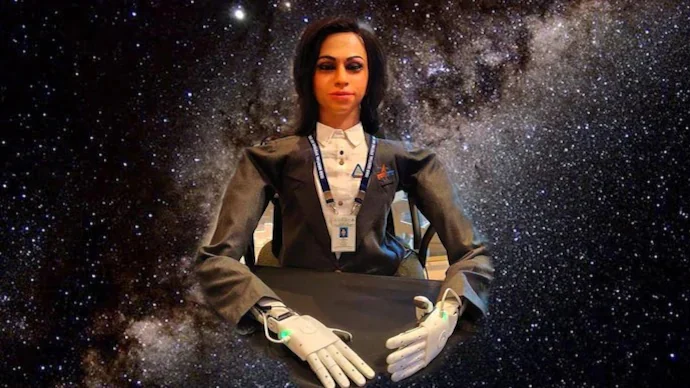India’s female robot astronaut Vyommitra will fly into space ahead of Indian Space Research Organisation’s (ISRO) ambitious Gaganyaan mission – the country’s manned space flight carrying Indian astronauts into space – said the Union minister of science and technology, on Sunday (Feb 4).
About Vyommitra
The Indian Minister of State (Independent Charge) Science and Technology Dr Jitendra Singh said the uncrewed Vyommitra Mission is scheduled to take place ahead of the manned mission Gaganyaan.
The name Vyommitra is derived from two Sanskrit words ‘Vyoma’ which means Space and ‘Mitra’ (meaning friend), said the Indian minister.
WATCH | Who is ISRO’s Vyommitra? | ‘Republic of Bharat’: Chorus grows to rename India
He also spoke about how the female robot astronaut is equipped with the capability to monitor module parameters, issue alerts and execute life support operations. “It can perform tasks such as operating six panels and responding to the queries,” Dr Singh added.
He further elaborated that the Vyommitra astronaut “is designed in such a manner so as to simulate human functions in the Space environment and interact with the Life Support System.”
According to the Indian minister, the ‘Vyommitra’ Mission is scheduled for the third quarter of this year, while a manned mission ‘Gaganyaan’ is scheduled to be launched in 2025.
Speaking about the Chandrayaan 3 mission – which made its historic landing on the South Pole of the moon in August last year – Dr Singh said that it is following its normal expected course of action and vital inputs sent by it will be shared soon. However, he did not mention any specific timeline.
About Gaganyaan mission
In October last year, ISRO announced that they had successfully launched the Gaganyaan Test Vehicle Development Flight Mission-1 test vehicle (TV-D1 Flight Test), in the run up to the launch of India’s first-ever manned space flight.
This was meant to qualify the crew escape system and parachute system, said India’s Department of Space, in a statement, adding that the “human rating” of the launch vehicle is complete, all the propulsion stages are qualified and all the preparations are in place.
TV-D1 is a liquid-propelled single-state test vehicle. The Crew Escape System, which the test vehicle carried with it, is India’s homegrown system which will be crucial for the safety of Indian astronauts.
The crew escape system safeguards the astronauts in case a catastrophic error occurs during their spaceflight endangering the spacecraft they are travelling in.
The Gaganyaan project aims to send three astronauts into a 400-kilometre orbit around the Earth for three days and bring them back safely.




